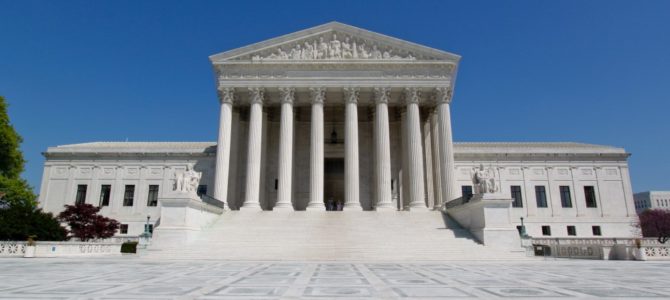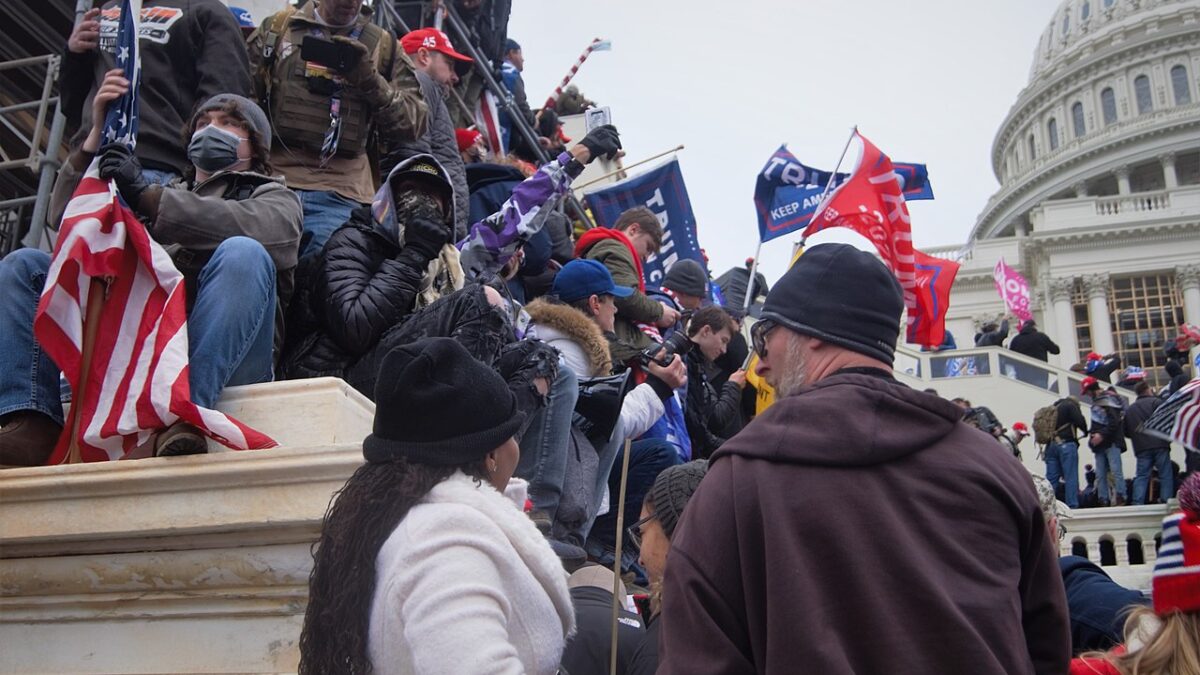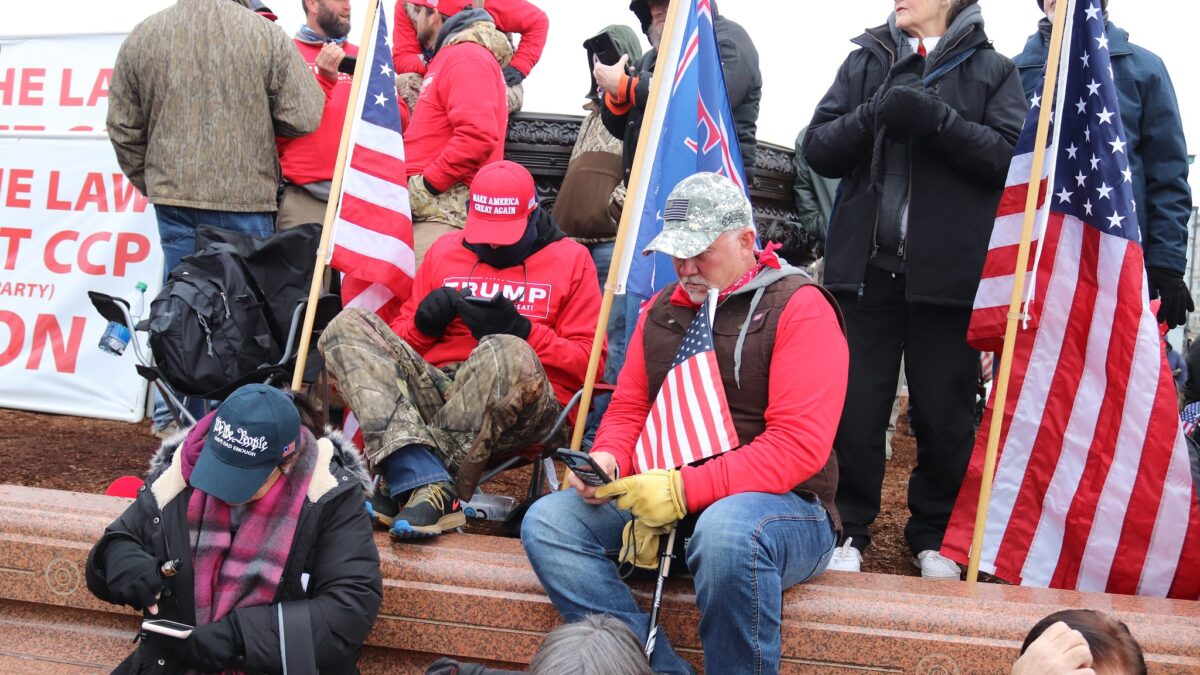
On Monday, the Supreme Court agreed to hear an appeal by two petitioners challenging New York’s denial of their applications for concealed-carry firearm licenses. The case, New York State Rifle & Pistol Association, Inc. v. Corlett, represents the first time in more than a decade that the high court will hear a Second Amendment case. Here’s your lawsplainer for the case—and Second Amendment jurisprudence.
The Second Amendment provides: “A well regulated Militia, being necessary to the security of a free State, the right of the people to keep and bear Arms, shall not be infringed.” In 2008, in District of Columbia v. Heller, the Supreme Court held the Second Amendment protects “the individual right to possess and carry weapons in case of confrontation.” The Heller decision further held that an individual’s right exists regardless of his service in a militia, reasoning that the “militia” clause served as a prefatory clause, explaining the purpose of the protection contained in the operative clause, but not limiting the individual right.
The court in Heller reached these conclusions after a detailed examination of the origins of the Second Amendment: “Heller explored the right’s origins, noting that the 1689 English Bill of Rights explicitly protected a right to keep arms for self-defense, and that by 1765, [William] Blackstone was able to assert that the right to keep and bear arms was ‘one of the fundamental rights of Englishmen.’”
American colonists shared that view, the Supreme Court concluded, noting that “King George III’s attempt to disarm the colonists in the 1760s and 1770s ‘provoked polemical reactions by Americans invoking their rights as Englishmen to keep arms.’” A thorough examination of the ratification debates and early history of our country confirmed for the Supreme Court that the right to keep and bear arms constitutes a fundamental individual right.
States Must Obey the Constitution Too
Two years after the Supreme Court held in Heller that the Second Amendment guarantees an individual right to keep and bear arms, the high court in McDonald v. City of Chicago held that right “is fully applicable to the States” and state subdivisions, such as counties and cities.
To understand the import of McDonald, one must remember that the Bill of Rights amended the federal Constitution and when those amendments were ratified, they only protected individuals from infringements by the federal government—and more specifically Congress. However, after the Civil War, ratification of the Fourteenth Amendment “fundamentally altered our country’s federal system,” by providing, among other things, that a state may not abridge “the privileges or immunities of citizens of the United States” or deprive “any person of life, liberty, or property, without due process of law.”
The Supreme Court would later hold that the due process clause of the Fourteenth Amendment incorporated individual rights contained in the Bill of Rights, protecting citizens from state actors’ violation of those rights. In other words, under the high court’s view, the Fourteenth Amendment provided that a state will not deprive any person of life, liberty, or property, without due process of law, nor will a state deny any person of his right to freedom of speech, or free exercise of religion, or to be free from unreasonable searches and seizures.
This “incorporation doctrine,” however, was “selective,” with the Supreme Court incorporating into the Fourteenth Amendment only those rights contained in the Bill of Rights it considered “fundamental” to “liberty and justice.” In McDonald, then, the Supreme Court considered the question of whether the right to keep and bear arms was fundamental to liberty and justice and thus incorporated into the Fourteenth Amendment. The same history the court considered in Heller led a majority of the justices to conclude the individual right to keep and bear arms constituted a fundamental right on which states and state subdivisions must not infringe.
Hands-Off Approach to the Second Amendment
While Heller and McDonald were landmark Second Amendment decisions—and the first cases the Supreme Court decided on the right to keep and bear arms since 1939—the issues addressed in both cases were narrow. Both cases considered the limited question of whether laws banning the possession of handguns, and regulating the possession of rifles and shotguns in a person’s home, violated the Second Amendment. In both cases, the Supreme Court declared the laws unconstitutional.
Following Heller and McDonald, the Supreme Court has rejected numerous challenges to other laws affecting the right to bear keep and bear arms, taking a nearly universal hands-off approach on the Second Amendment. The rare exception came in 2016, when the court, without a hearing and in an unsigned two-page order, held in Caetano v. Massachusetts that stun guns were protected under the Second Amendment. Unsurprisingly, that decision added little clarity to Second Amendment jurisprudence.
Since then, the lower federal courts have remained divided over the application of the Second Amendment to a variety of laws regulating firearms. “Perhaps the single most important unresolved Second Amendment question” remaining after Heller and McDonald, as the petitioners in the New York State Rifle case put it, “is whether the Second Amendment secures the individual right to bear arms for self-defense where confrontations often occur: outside the home.”
That question remained unanswered by the Supreme Court in Heller and McDonald because both of those cases involved challenges to bans of handguns (and regulations of rifles and firearms) in the home. Following Heller and McDonald, the D.C. Circuit and the Seventh Circuit both held that the Second Amendment also guarantees an individual right to carry handguns outside the home for self-defense. Conversely, the First, Second, Third, Fourth, and Ninth Circuits held that Heller and McDonald did not extend Second Amendment rights beyond the threshold.
This “split in the circuits,” or disagreement among the 12 appellate courts, presented the Supreme Court the perfect vehicle for clarifying Second Amendment jurisprudence. (A thirteenth appellate court, the Federal Circuit, also exists but it hears appeals related to specific subject matters, such as patents.)
Supreme Court Shrinks from Its Duty Again
Yet, just under a year ago, the Supreme Court refused to hear a case challenging a New Jersey law that enacted a “near-total prohibition on carrying a firearm in public,” by limiting the granting of handgun permits to citizens who could establish “a justifiable need to carry a handgun.” A private citizen could satisfy this “justifiable need” requirement only by establishing “in detail the urgent necessity for self-protection, as evidenced by specific threats or previous attacks which demonstrate a special danger to the applicant’s life that cannot be avoided by means other than by issuance of a permit to carry a handgun.”
Justice Clarence Thomas issued a scathing dissent from the denial of certiorari in the New Jersey case, which Justice Brett Kavanaugh joined. “This case gives us the opportunity to provide guidance on the proper approach for evaluating Second Amendment claims; acknowledge that the Second Amendment protects the right to carry in public; and resolve a square Circuit split on the constitutionality of justifiable-need restrictions on that right,” Thomas explained.
While “there is no way to know why the justices turned down the petitions for review last year,” including in the New Jersey case, legal “commentators have speculated that some conservative justices may not have been confident that Chief Justice John Roberts would provide a fifth vote to expand gun rights.” However, given Roberts’s penchant for issuing concurrences in controversial cases, and thereby creating fractured decisions lacking in precedential value, it seems more likely the justices saw no value in issuing plurality opinions that would only further muddy the law.
Finally, a Chance to Clarify a Mess of Mud
No matter the reason the Supreme Court shrunk from its duty to say what the law is for the Second Amendment, now that Justice Amy Coney Barrett has replaced Justice Ruth Bader Ginsburg, the court has agreed to hear the appeal in New York State Rifle & Pistol Association, Inc. v. Corlett.
In New York State Rifle, Robert Nash and Brandon Koch challenged New York’s denial of their applications to obtain a license to carry a concealed handgun. In New York, citizens are banned entirely from the open carry of handguns, while permitting citizens to carry a concealed handgun upon issuance of a license. However, members of the general public, such as Nash and Koch, may only be granted a license under New York law “when proper cause exists.”
“Proper cause” is not defined by statute, but state courts have ruled that “an applicant seeking a license to carry a handgun for self-defense “must ‘demonstrate a special need for self-protection distinguishable from that of the general community or of persons engaged in the same profession.’” Living in a high-crime area is insufficient.
The state denied Nash and Koch permits to carry concealed handguns, concluding they failed to establish “proper cause.” Nash and Koch sued in a federal district court to challenge the law, claiming requiring them to establish “proper cause” to arm themselves in public violated their Second Amendment right to keep and bear arms in self-defense.
Americans Want to Protect Themselves Outside Home
The Second Circuit Court of Appeals, which hears appeals from federal district courts located in New York, rejected Nash and Koch’s argument, holding it was foreclosed by the circuit’s earlier decision in Kachalsky v. County of Westchester. In Kachalsky, the Second Circuit upheld New York’s “proper cause” regulation. In doing so, the federal appellate court initially noted that while “we know from [Heller and McDonald] that Second Amendment guarantees are at their zenith within the home,” “[w]hat we do not know is the scope of that right beyond the home and the standards for determining when and how the right can be regulated by a government.”
The Second Circuit in Kachalsky then considered the latter question and concluded that the Second Amendment has vastly diminished force outside the home. This “diminished force,” the court believed, meant that New York could constitutionally “limit[ed] handgun possession in public to those who show a special need for self-protection.” In New York State Rifle, the Second Circuit did not elaborate further on the reasoning of Kachalsky, instead rejecting Nash and Koch’s Second Amendment arguments as failing under the court’s precedent.
In granting certiorari earlier this week, the Supreme Court will finally address the constitutionality of New York’s law. However, in granting review of the case, the Supreme Court narrowed the issue for review to “whether the State’s denial of petitioners’ applications for concealed-carry licenses for self-defense violated the Second Amendment.” This question differed from that which the petitioners had sought review, namely “whether the Second Amendment allows the government to prohibit ordinary law-abiding citizens from carrying handguns outside the home for self-defense.”
Both framings of the issue, however, squarely present the Supreme Court with the question of whether Heller and McDonald’s guarantee of an individual right to keep and bear arms is limited to the home. While several circuit courts have read Heller and McDonald as limited to the possession of guns within a home, Justice Thomas’ recent dissent (joined by Justice Kavanaugh) from the denial of certiorari in a gun case exposed the folly of such a view:
As this Court explained in Heller, at the time of the founding, as now, to bear meant to carry. When used with arms, . . . the term has a meaning that refers to carrying for a particular purpose—confrontation. Thus, the right to bear arms refers to the right to wear, bear, or carry upon the person or in the clothing or in a pocket, for the purpose of being armed and ready for offensive or defensive action in a case of conflict with another person. The most natural reading of this definition encompasses public carry. Confrontations, of course, often occur outside the home. See, e.g., Moore, supra, at 937 (noting that ‘most murders occur outside the home’ in Chicago). Thus, the right to carry arms for self-defense inherently includes the right to carry in public.
This conclusion not only flows from the definition of bear Arms but also from the natural use of the language in the text. As I have stated before, it is extremely improbable that the Framers understood the Second Amendment to protect little more than carrying a gun from the bedroom to the kitchen. The meaning of the term bear Arms is even more evident when read in the context of the phrase “right . . . to keep and bear Arms. To speak of bearing arms solely within one’s home . . . would conflate bearing with keeping, in derogation of [Heller’s] holding that the verbs codified distinct rights. In short, it would take serious linguistic gymnastics—and a repudiation of this Court’s decision in Heller—to claim bear Arms does not extend the Second Amendment beyond the home.
Justice Thomas added to the above reasoning an analysis of “cases and treatises from England, the founding era, and the antebellum period,” all of which “confirm that the right to bear arms includes the right to carry in public.”
Of course, several justices are nonetheless likely to resort to linguistic gymnastics to avoid what they perceive as bad (or unpopular) policy. But will five justices stand firm? We will know next year.









